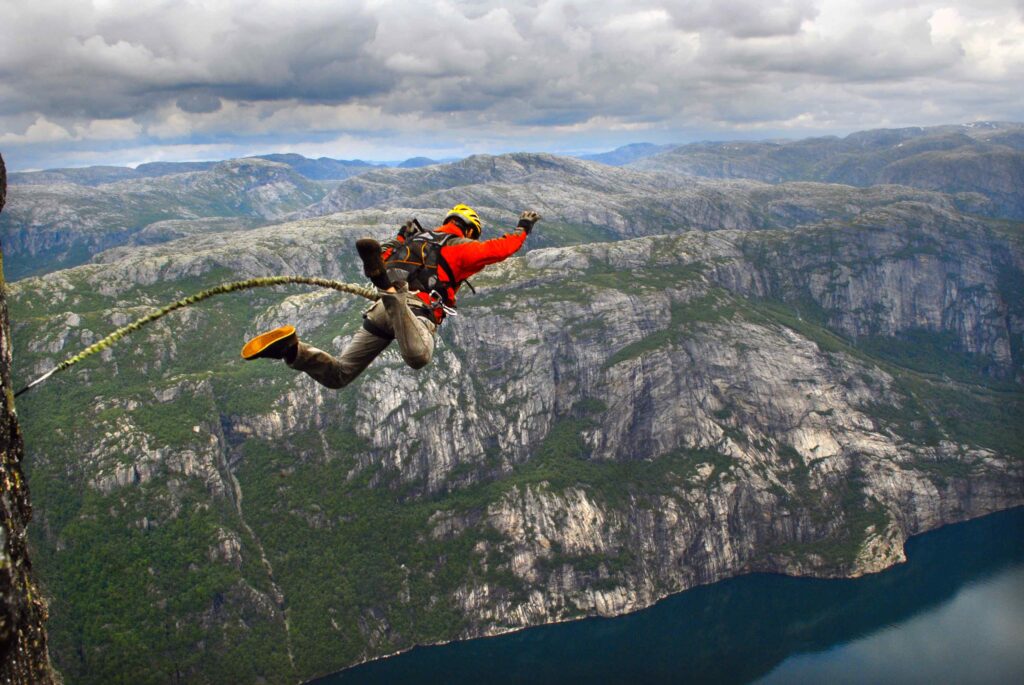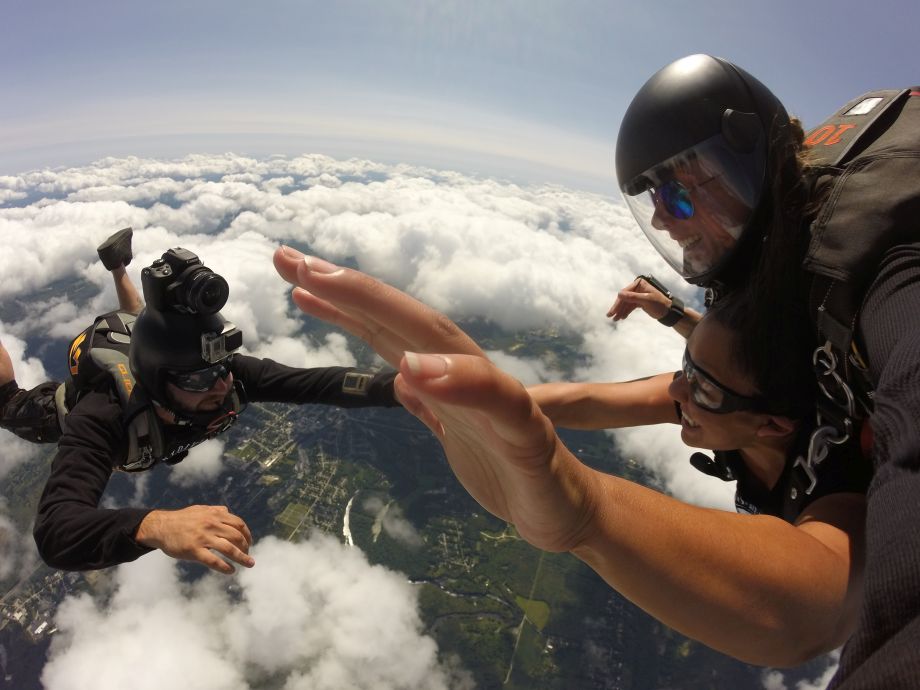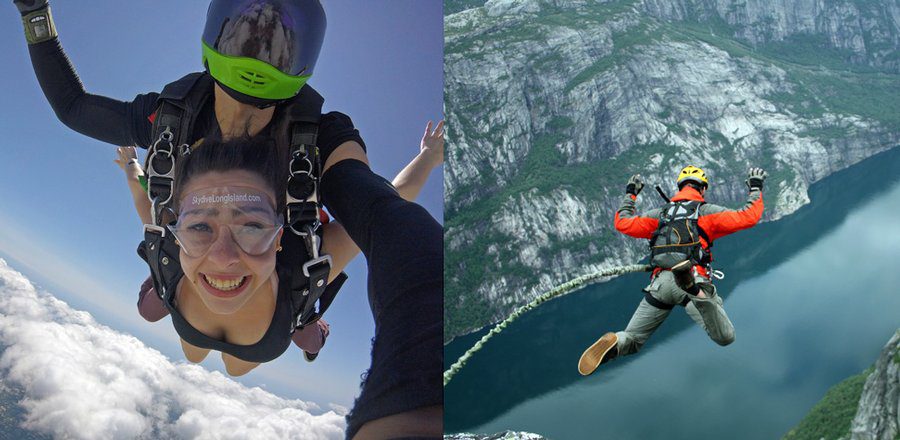Are you an adrenaline junkie in search of the ultimate thrill? Well, look no further because today we are diving headfirst into the age-old debate: what is more dangerous – bungee jumping or skydiving? Strap yourselves in (or rather, strap yourselves on), because we’re about to take a heart-pounding journey through the exhilarating world of extreme sports. Get ready to unravel the mysteries of these death-defying adventures and discover which one will give you the biggest rush. So grab your parachute or your bungee cord, because it’s time to find out which adventure will make your heart race faster than a cheetah on caffeine. Let the battle begin!
Understanding the Thrill: Bungee Jumping vs Skydiving
For those with an insatiable hunger for adrenaline and a taste for the extreme, bungee jumping and skydiving stand as the titans of thrill. Both are renowned for their heart-pounding, breath-snatching experiences that cascade you into an avalanche of exhilaration. Yet, as you stand on the precipice of these adventures, the question that often echoes in the mind is – which of these two is the more dangerous plunge?
Let’s peel back the layers of adrenaline and excitement to dissect the raw facts and figures that lie beneath these high-octane experiences.
| Adventure Sport | Fatality Rate |
|---|---|
| Bungee Jumping | 1 death per 500,000 jumps |
| Skydiving | 1 death per 101,083 jumps |
As the table illustrates, the statistics suggest a higher fatality rate for skydiving. However, it’s crucial to remember that the risk of death while partaking in either of these sports remains astronomically low. The thrill of these experiences often overshadows the inherent risks, drawing countless adventurers into their exhilarating embrace.
So, whether you’re a seasoned adrenaline junkie or a novice thrill-seeker, the question isn’t just about danger—it’s about understanding the unique rush each sport offers. As we delve deeper into the subsequent sections, we’ll uncover the nuances that make bungee jumping and skydiving such captivating adventures.
Assessing the Danger: Bungee Jumping
As adrenaline junkies, we often find ourselves standing on the precipice of a thrilling experience, heart pounding and palms sweating. One such experience that consistently crops up on many bucket lists is the exhilarating sport of bungee jumping. Yet the question, “Is bungee jumping dangerous?” has undoubtedly crossed many minds, especially those of beginners. The thought of diving headfirst from a towering height, relying solely on the strength of an elastic cord, is enough to make anyone’s heart skip a beat.
However, before the fear overwhelms you, let’s delve into the facts and statistics. The fatality rate for bungee jumping is estimated to be 1 in 500,000 jumps. Yes, you read that right. Your odds of meeting a fatal end while bungee jumping are as low as 1 in half a million. This makes bungee jumping significantly safer than numerous other activities that we partake in daily without a second thought. For instance, the risks associated with hang gliding, driving, canoeing, mountain hiking, and even dance parties are higher compared to bungee jumping!
Did you know? The risk of dying while bungee jumping is minuscule compared to the number of successful jumps performed worldwide every day!
The reason for this surprising safety record of bungee jumping lies in the advancements of modern technology and the implementation of strict safety protocols. These measures have drastically reduced the instances of fatalities and injuries associated with this extreme sport. Furthermore, my personal testament—four successful and injury-free jumps—adds credence to these facts.
So, while bungee jumping does send your adrenaline levels soaring, it is not as perilous as you might imagine. It’s an adventure sport, and like any other, it carries a degree of risk. But as the statistics show, bungee jumping is safer than many other adventure sports of the same caliber.
As we move forward, keep in mind that the key to a safe and memorable bungee jumping experience lies in adhering to safety guidelines, choosing reputable operators, and trusting in the robust technology that makes this thrilling sport possible.
Unmasking the Perceived Threat: Skydiving
As you venture into the realm of adventure sports, skydiving might seem like a formidable adversary, much like bungee jumping. The very conception of free-falling from a dizzying altitude of 12,000-15,000 feet can send chills down anyone’s spine. But let’s take a moment to demystify this high-intensity sport. Is it as perilous as it is often perceived?
Based on statistics, skydiving records a fatality rate of 1 death per 101,083 jumps. While this might seem daunting, it’s worth noting that it’s still less risky than activities like hang gliding, driving, and even mountain hiking. The probability of a fatal skydiving accident is significantly lower than many other recreational activities, let alone daily activities we undertake without a second thought.
Contrary to popular belief, skydiving is less lethal than bungee jumping – a fact that might surprise many. The numbers speak for themselves: while bungee jumping records one fatality per 500,000 jumps, skydiving sees one death per 101,083 jumps.
But don’t let these numbers cloud your thrill. Just like bungee jumping, skydiving has experienced a tremendous safety improvement over the years, thanks to cutting-edge technology and the meticulous efforts of adventure sports companies. These enterprises prioritize their customers’ safety above everything else. They employ experienced instructors who have mastered the art of skydiving and are well-versed with stringent safety protocols.
Speaking from my own experience, each of my skydiving adventures has been a blend of adrenaline, excitement, and most importantly, safety. So, as the saying goes, ‘don’t fear the height, fear the fall’. But remember, with the right precautions and guidance, even the fall can turn into a thrilling, unforgettable experience.
Putting Risks into Perspective: The Unexpected Comparison

It’s natural to feel a certain degree of fear when standing on the edge of a bungee platform, or when you’re about to jump out of a plane. After all, these are not everyday activities for most of us. However, let’s delve into some statistics that may surprise you, and perhaps, change your perspective on the dangers associated with these adrenaline-pumping sports.
The thrill of freefall that both bungee jumping and skydiving offer has led to a common perception that these sports are extremely dangerous. But as we’ve seen, skydiving has a fatality rate of 1 in 101,083 jumps, while bungee jumping has an even lower rate of 1 in 500,000 jumps.
So, yes, while skydiving is statistically more dangerous than bungee jumping, the risks associated with both activities are indeed, very low.
Now, let’s compare these risk factors to something we do virtually every day – driving. In 2020, the global average of deaths resulting from car accidents was a shocking 18.2 per 100,000 people. This means that, ironically, you are 18 times more likely to die while driving to work than you are while skydiving. Moreover, the risk of death from driving is an astounding 91 times higher than that from bungee jumping.
Read all about: “South Melbourne Attractions: 20 Must-See Gems for an Unforgettable Experience”
Does this mean you should stop driving and start bungee jumping to work? Of course not. But these statistics serve to highlight an important point: the perceived risk of an activity is often much higher than the actual risk. And when it comes to extreme sports like bungee jumping and skydiving, this disparity is even more pronounced.
The bottom line is that while these sports are exhilarating and come with their own risks, they are not as life-threatening as many of us believe. With the right safety measures and experienced instructors, you can enjoy these adventures without undue worry.
So the next time you feel your heart pounding at the thought of jumping from great heights, remember these statistics. Embrace the thrill, knowing that you’re far more likely to tell an exciting story than become a statistic.
Choosing Your Adventure

As dawn breaks, the exhilaration of a new day ushers in the prospect of an exciting adventure. The question remains: will you take the leap of faith with a bungee jump or soar through the skies with a skydive? The choice boils down to your personal taste and the type of thrill-seeker you identify as. Both escapades offer unique, adrenaline-fueled experiences that are relatively safe, given the advancements in technology and rigorous safety measures in place.
Imagine standing on the edge, heart pounding in your ears, as you prepare to plunge headfirst into the abyss below. The exhilarating rush of a bungee jump is intense and instant. Meanwhile, skydiving offers a different kind of thrill. It’s the sensation of free-falling through the sky, wind whipping past your face, before the parachute blossoms open and you glide peacefully back to solid ground.
Read all about: “Bungee Jumping in Virginia: Where Can You Experience the Ultimate Leap of Faith?”
The statistics speak for themselves. Skydiving and bungee jumping have seen a significant decrease in fatalities over the years, with one death per 101,083 jumps and one death per 500,000 jumps respectively. The reduction in risk is largely thanks to reputable companies that prioritize safety and adhere to strict protocols. So, when you’re standing on the brink of your next adventure, remember these numbers. They are not meant to instill fear, but to highlight the safety measures in place that make these thrilling experiences relatively safe.
When it comes to choosing between bungee jumping or skydiving, let your heart guide you. Consider the type of adventure that calls to your spirit. Whether you’re yearning for the instantaneous thrill of a bungee jump or the prolonged excitement of a skydive, both are unforgettable experiences that will leave lasting memories.
So, fellow thrill-seekers, the next time you find yourself questioning whether to go bungee jumping or skydiving, let these statistics guide your decision-making. After all, life is about experiences, and these two adventure sports certainly offer ones to remember.
Yes, bungee jumping is considered safe. Modern technology and strict protocols have significantly reduced fatalities and injuries in bungee jumping.
Bungee jumping is considered less dangerous than activities such as hang gliding, driving, canoeing, mountain hiking, and even dance parties.
The fatality ratio for bungee jumping is estimated to be 1 in 500,000 jumps, making it a relatively safe activity.
Yes, skydiving is considered more dangerous than bungee jumping. Skydiving has a fatality rate of 1 death per 101,083 jumps, whereas bungee jumping has a fatality rate of 1 death per 500,000 jumps.

